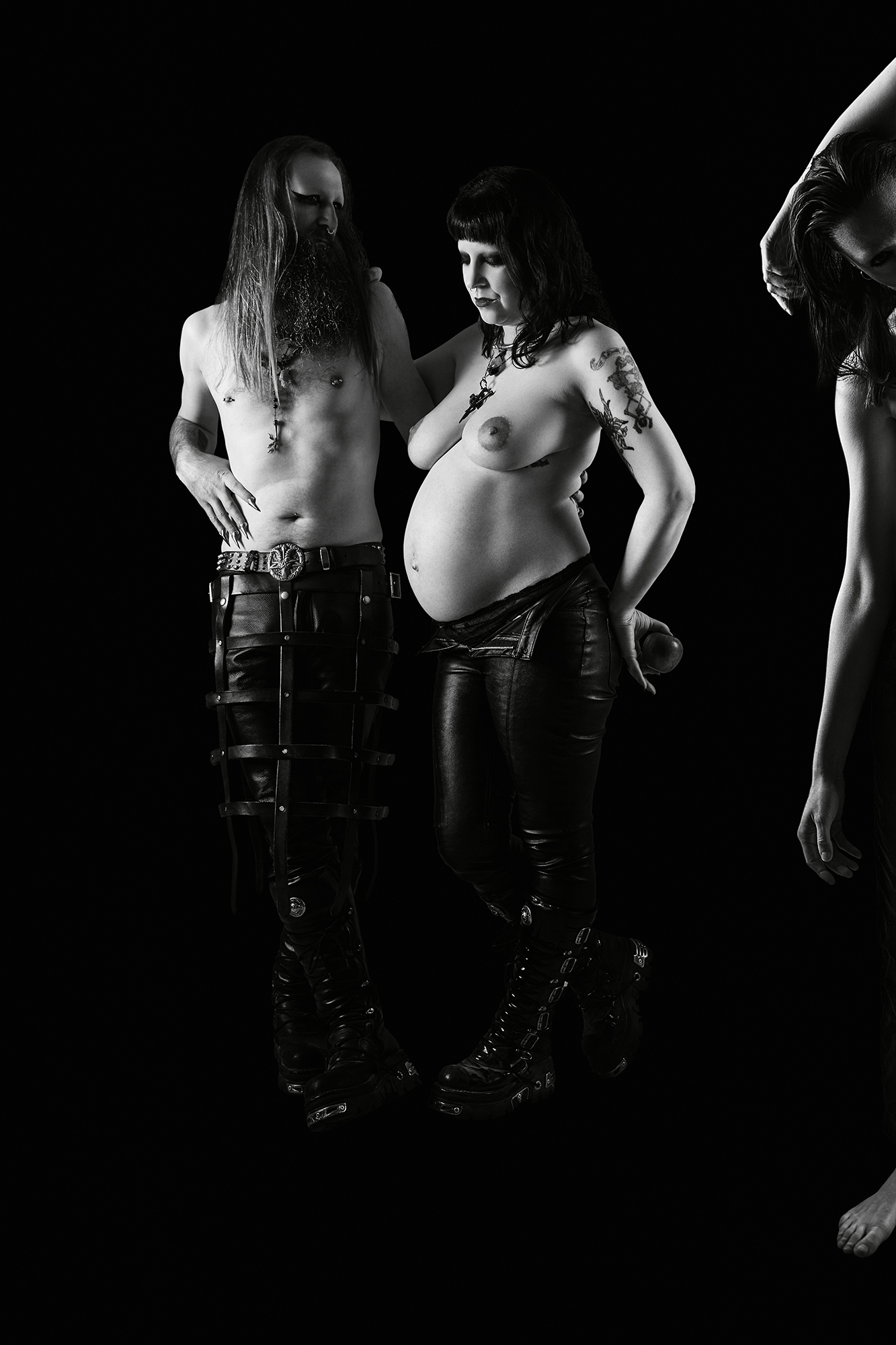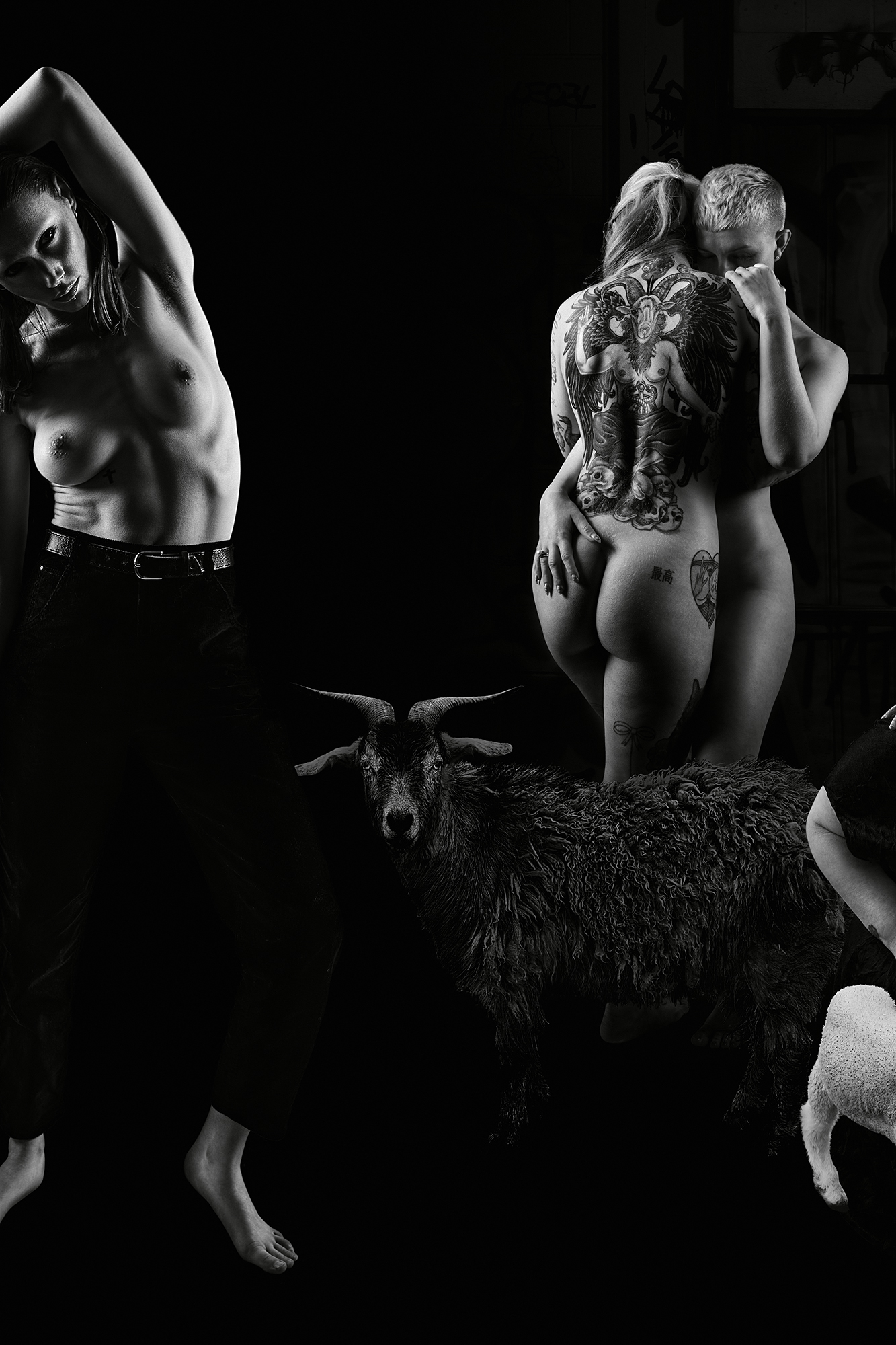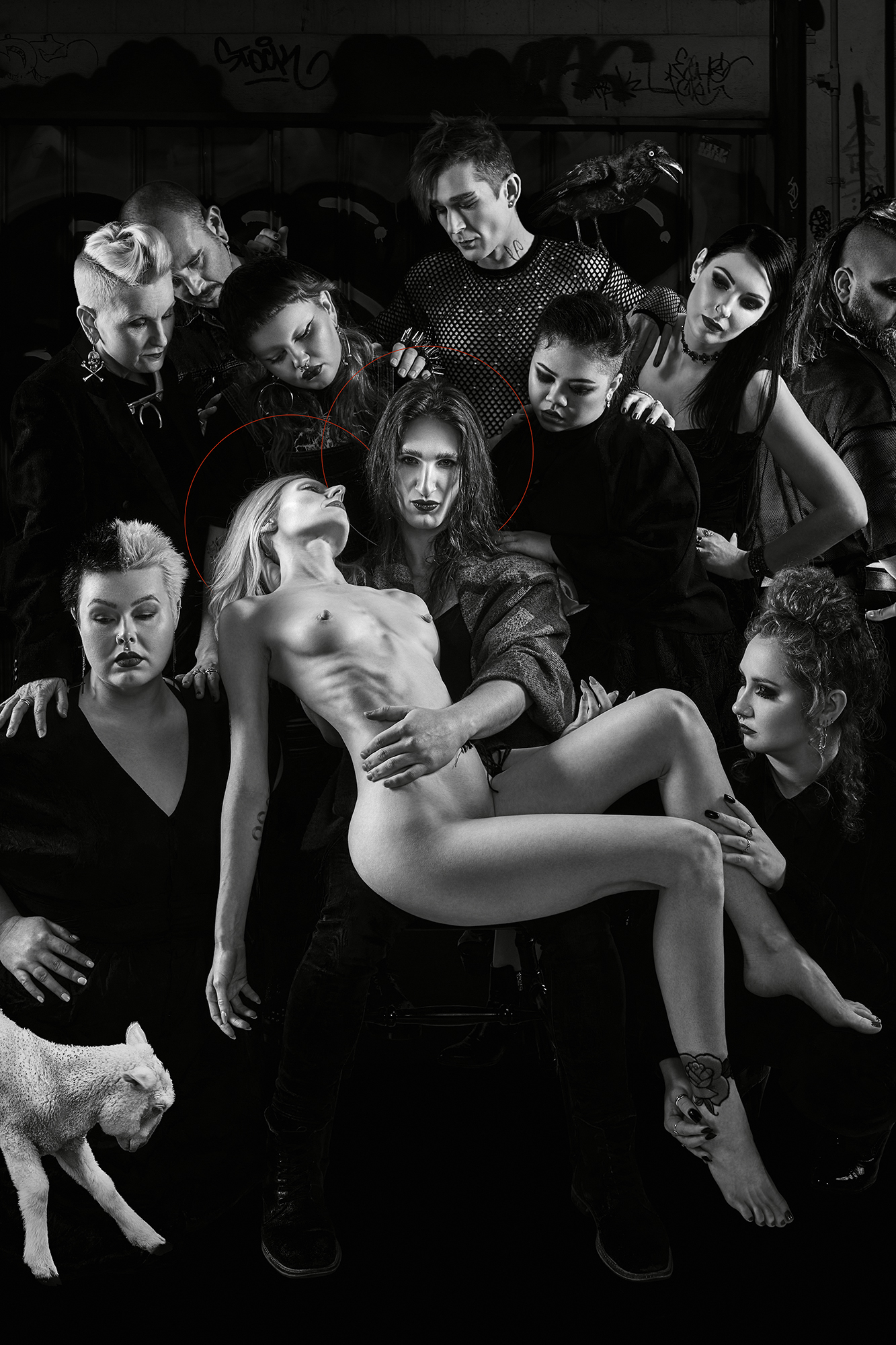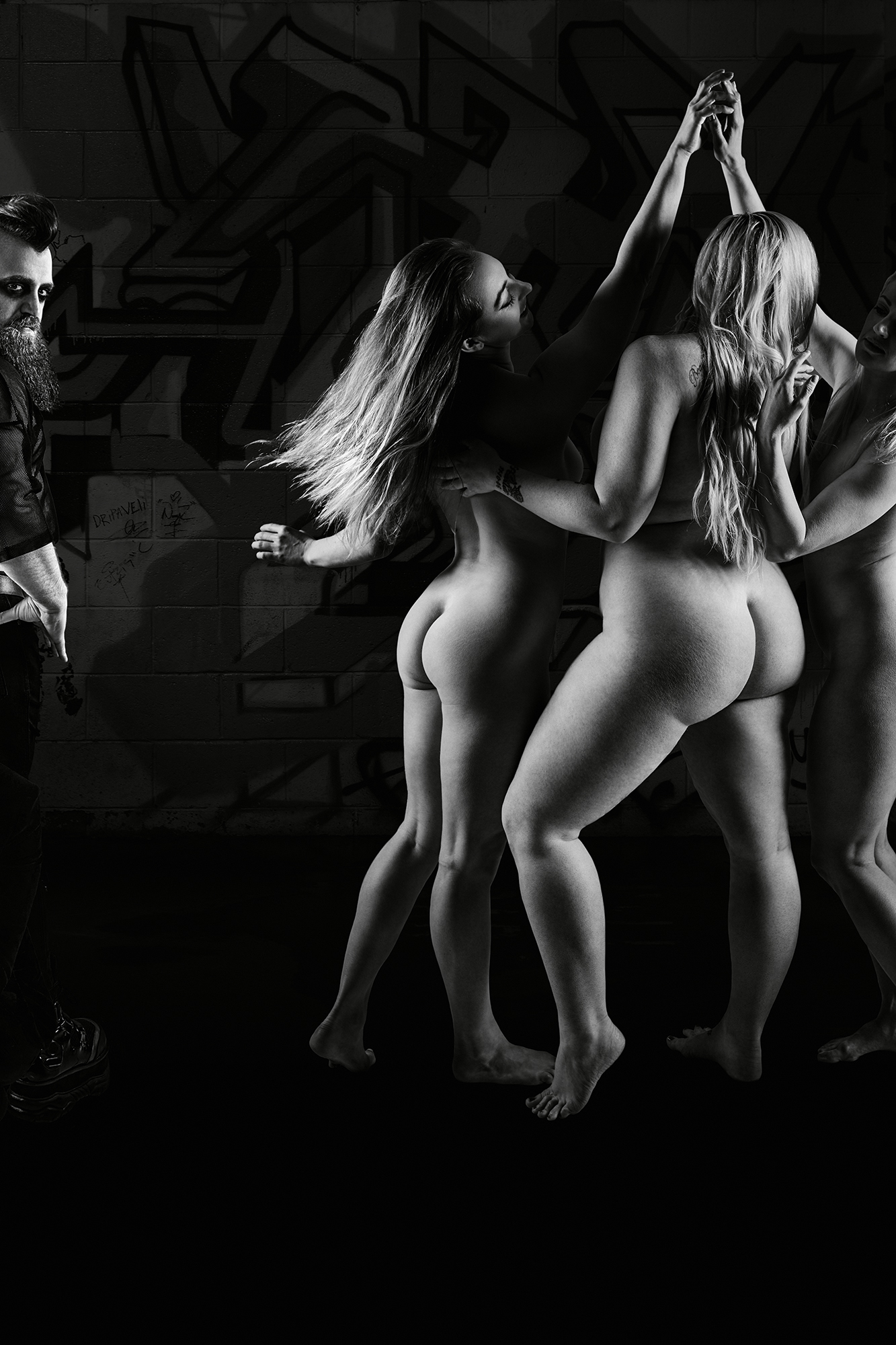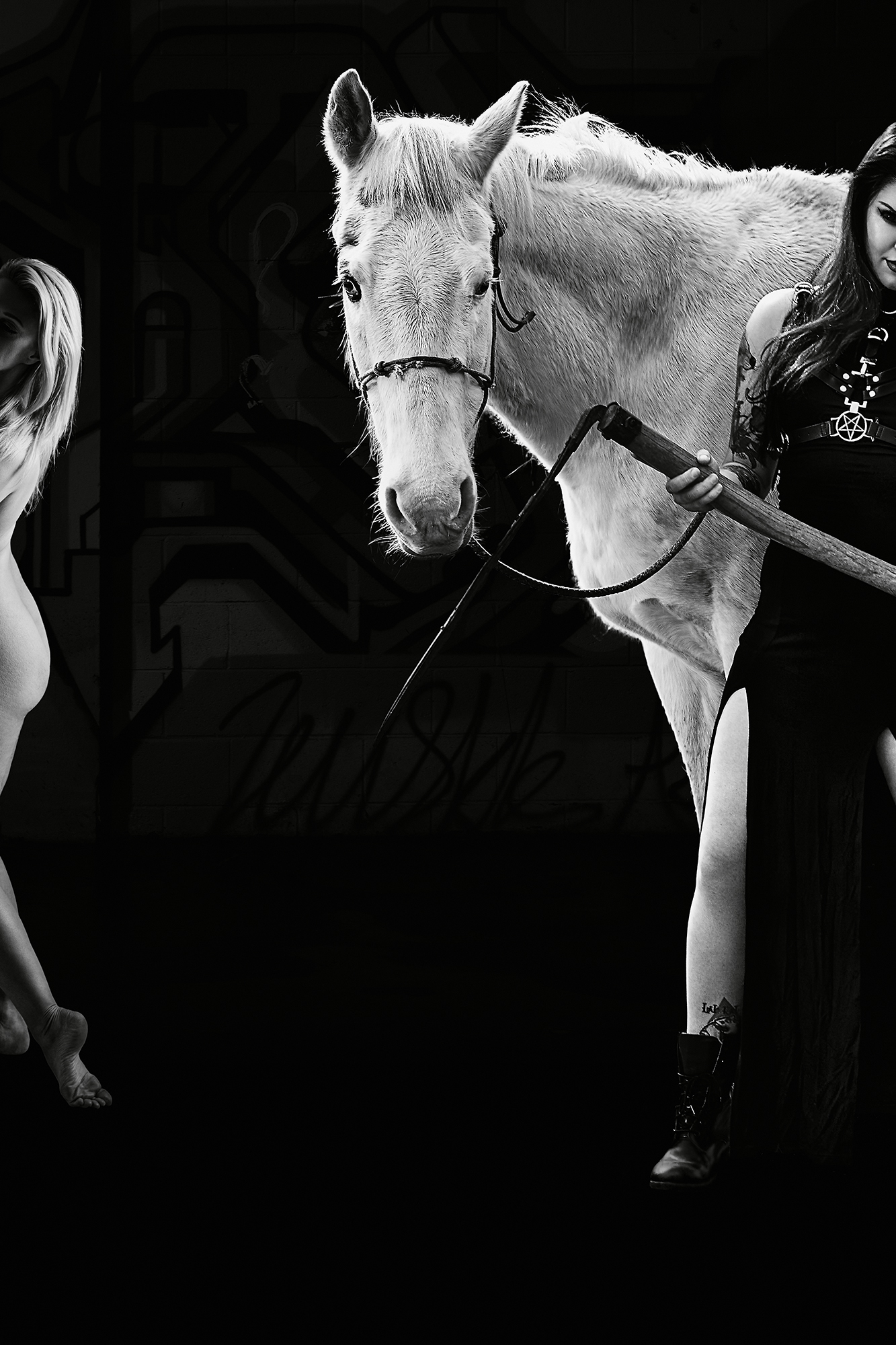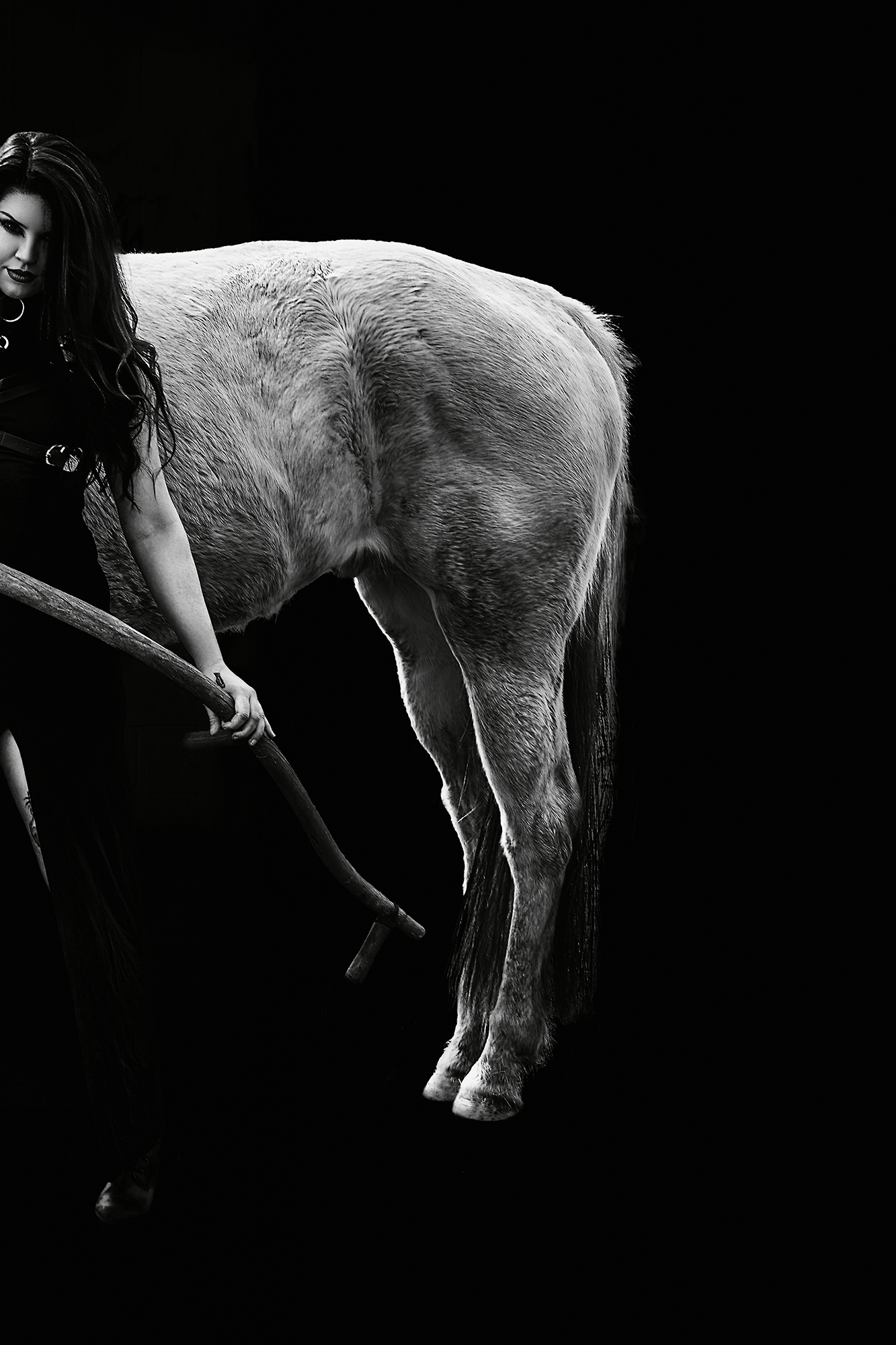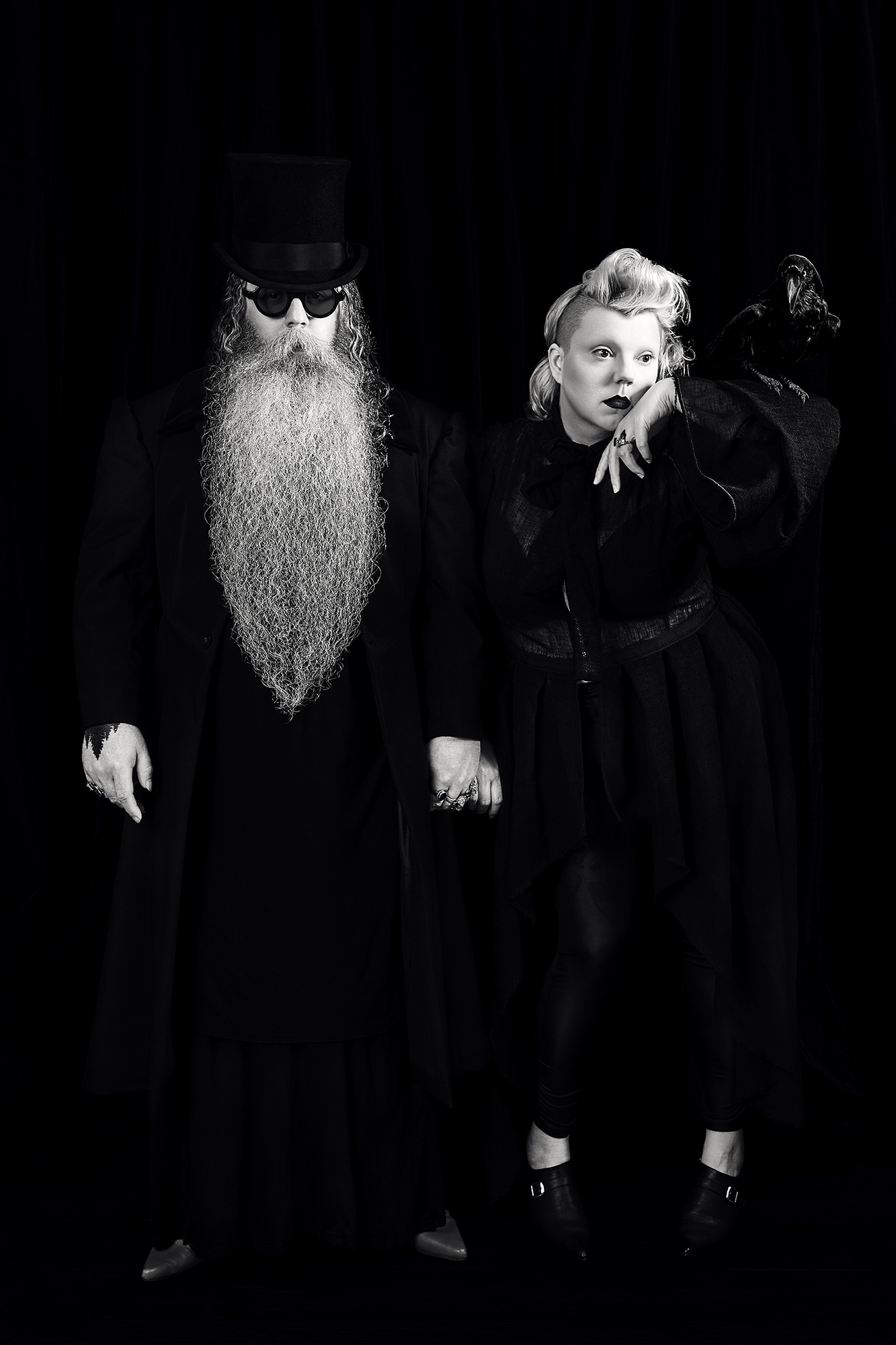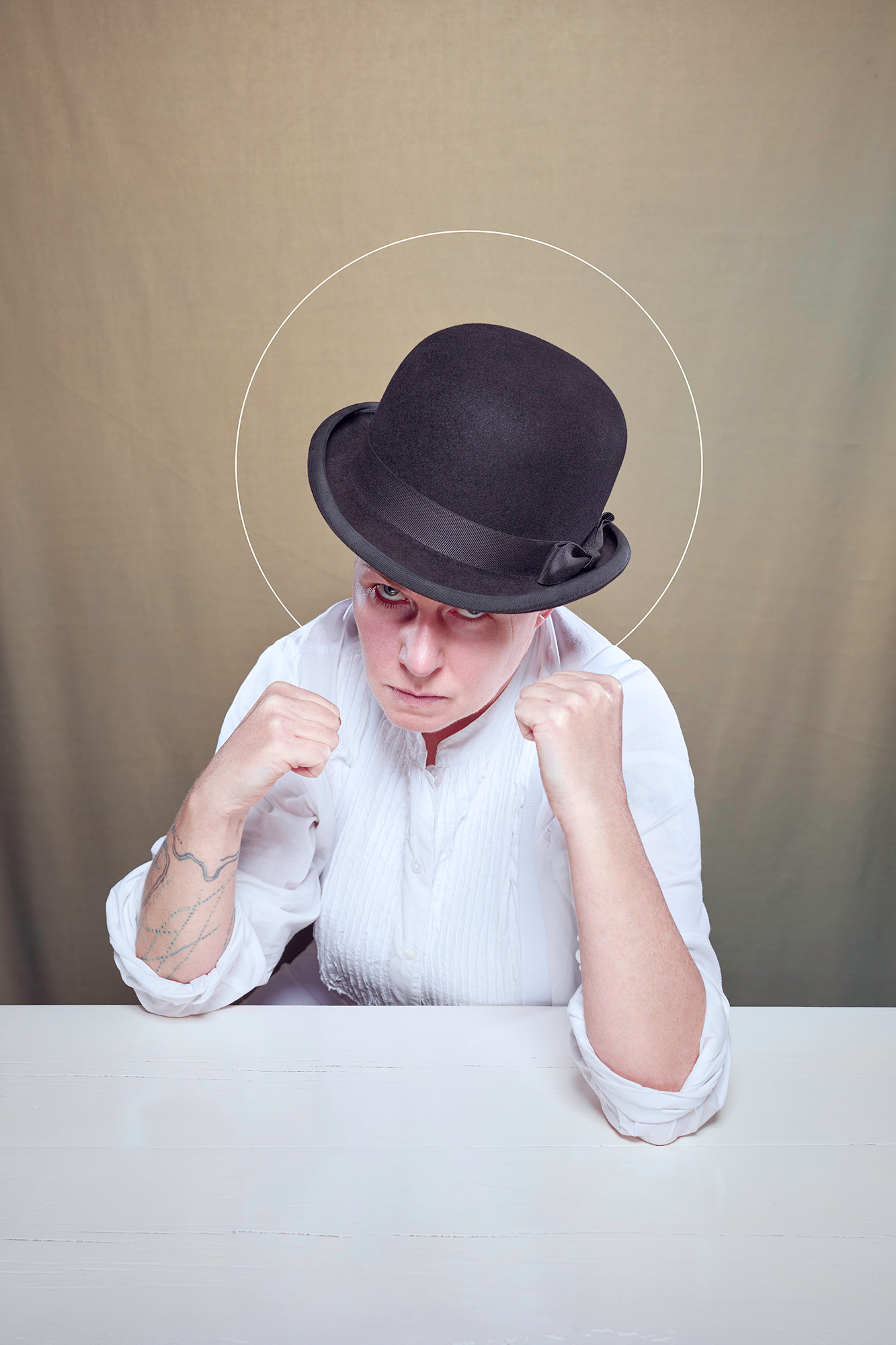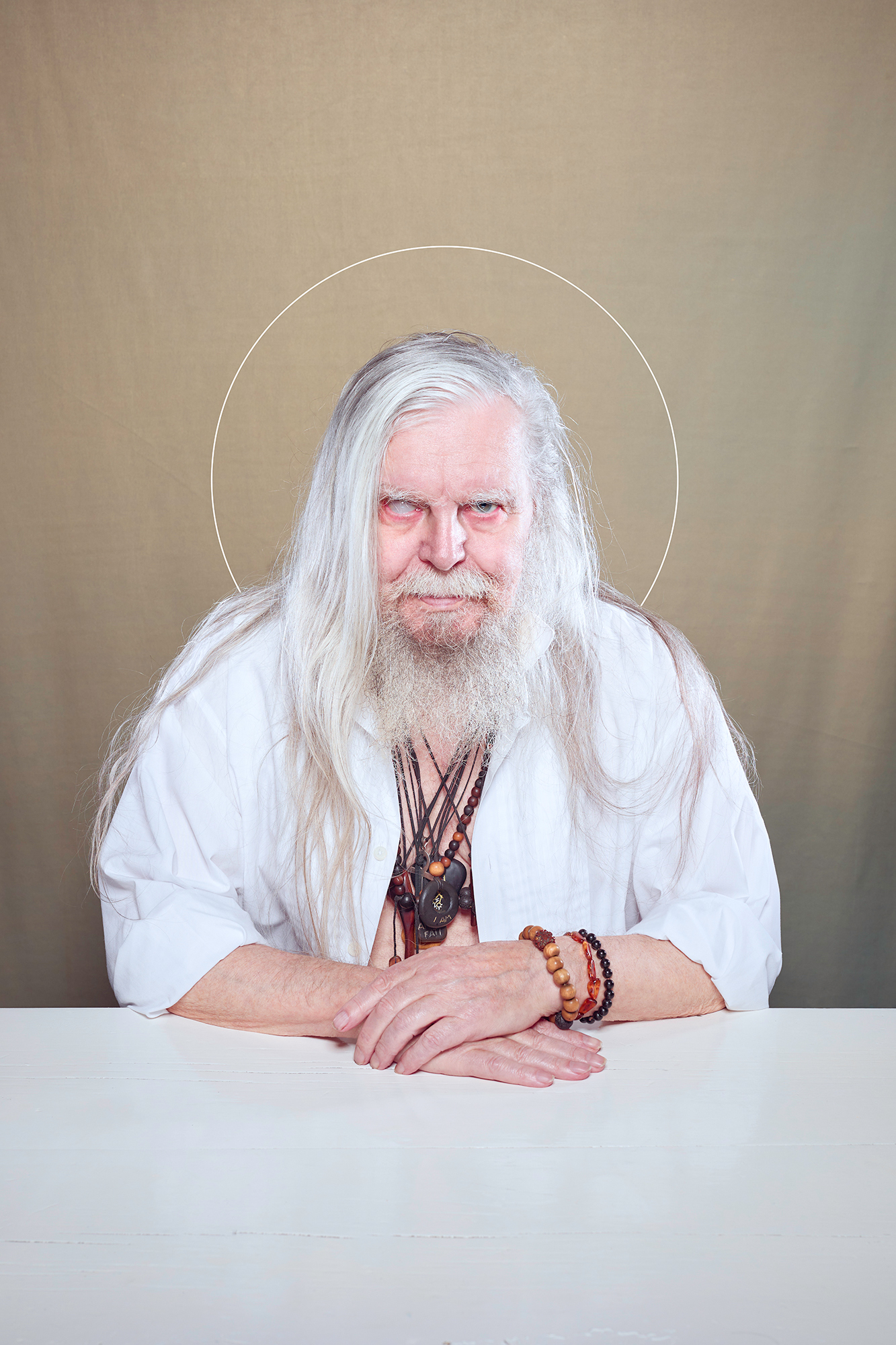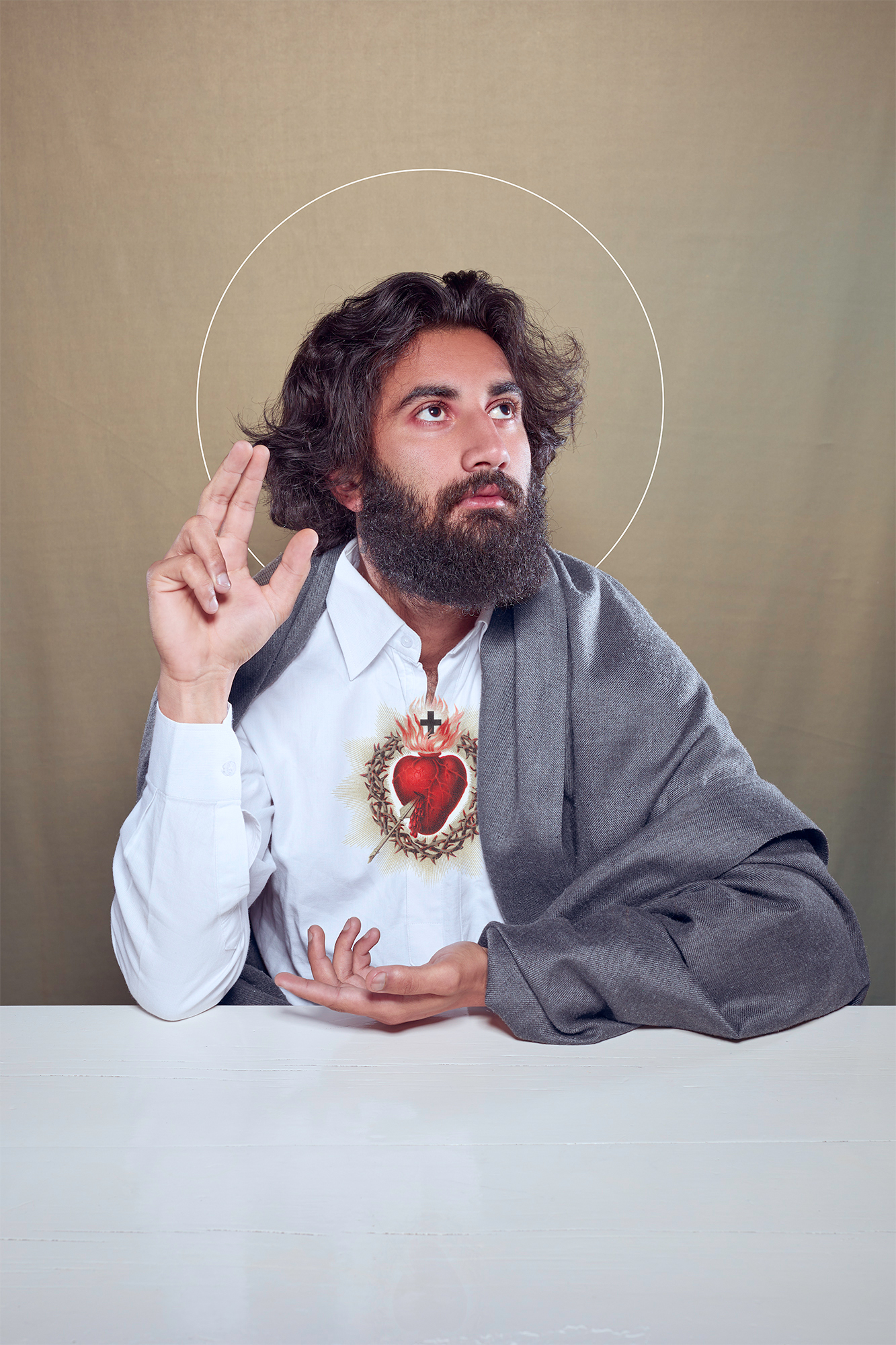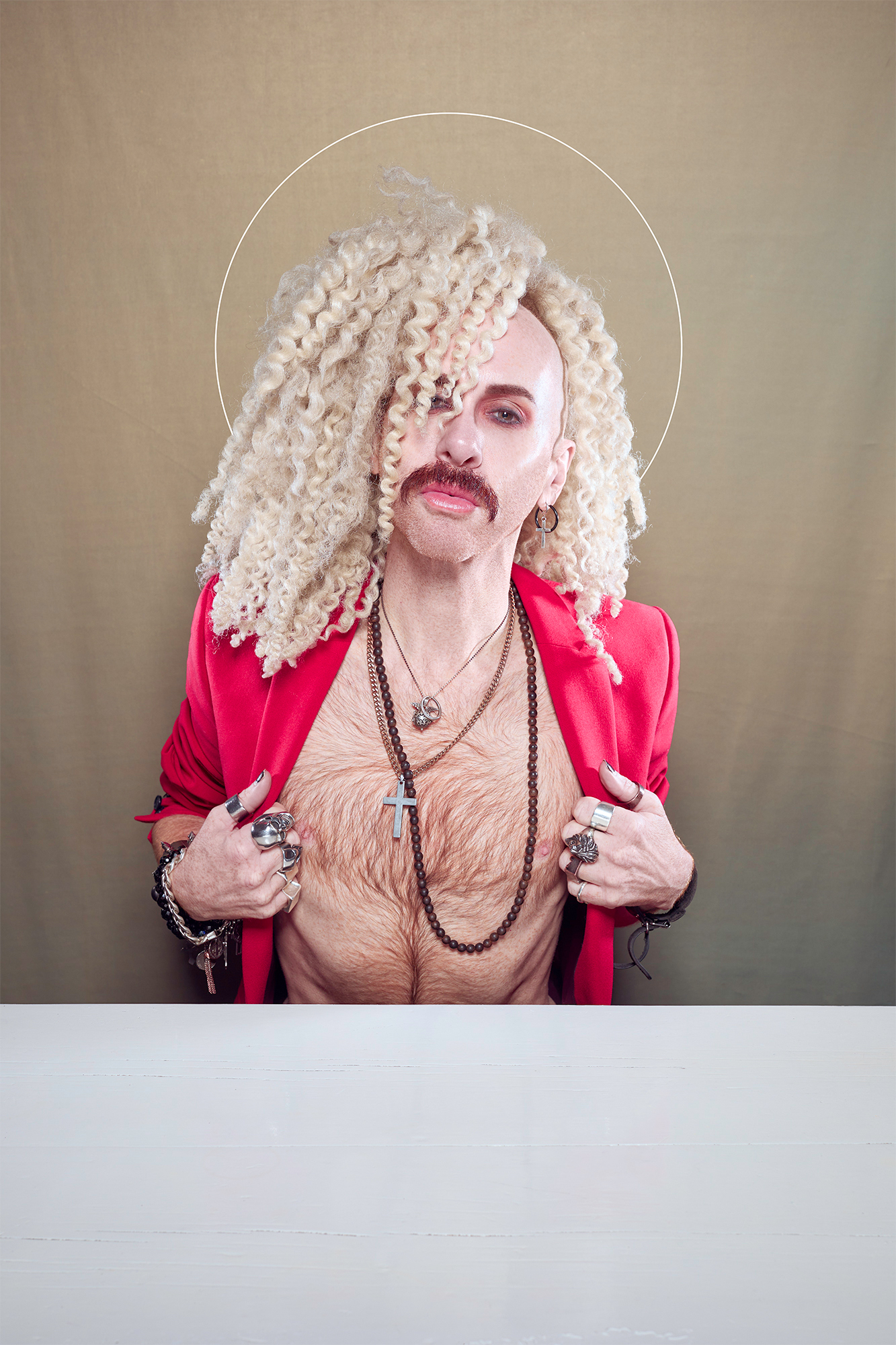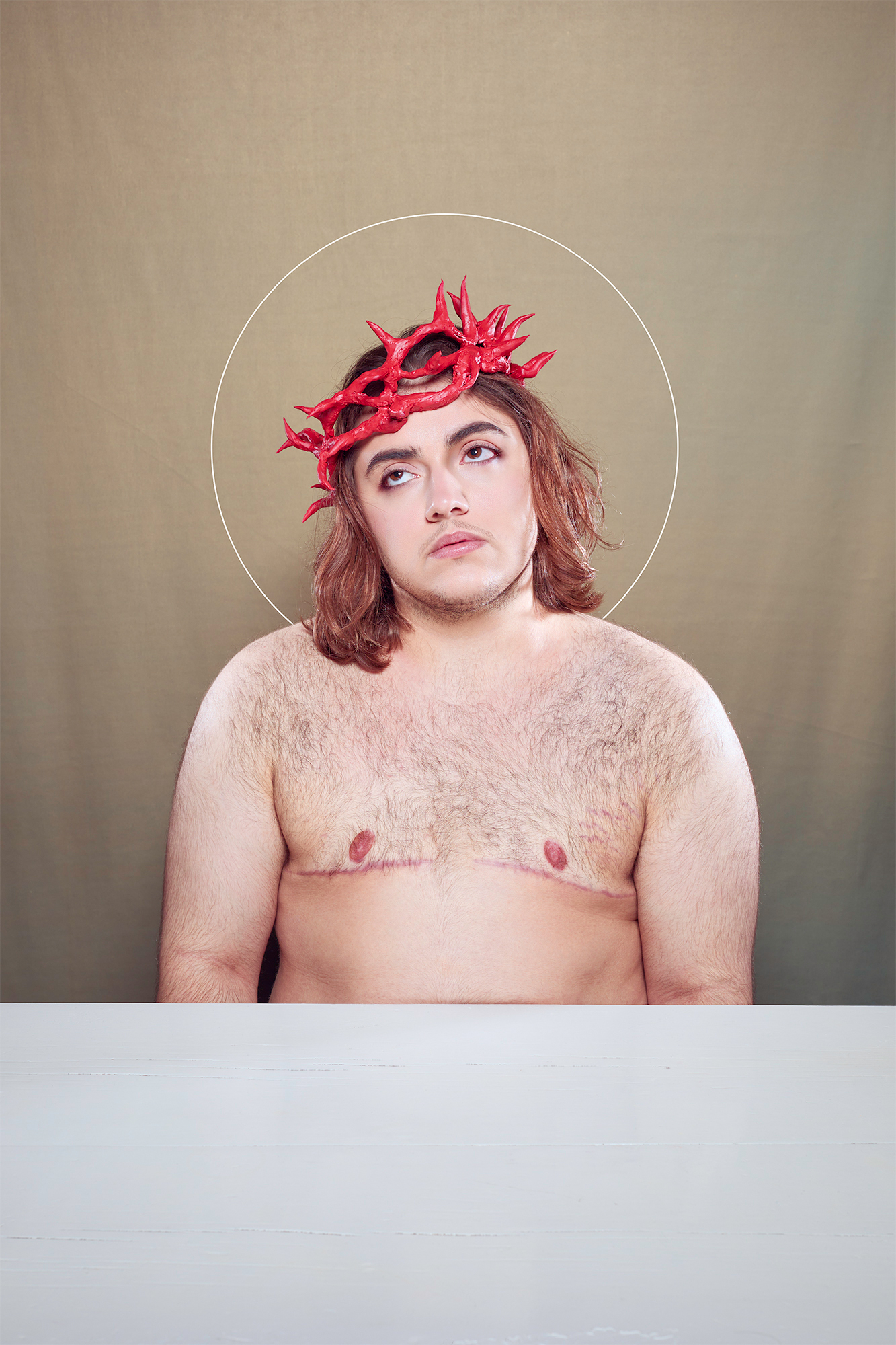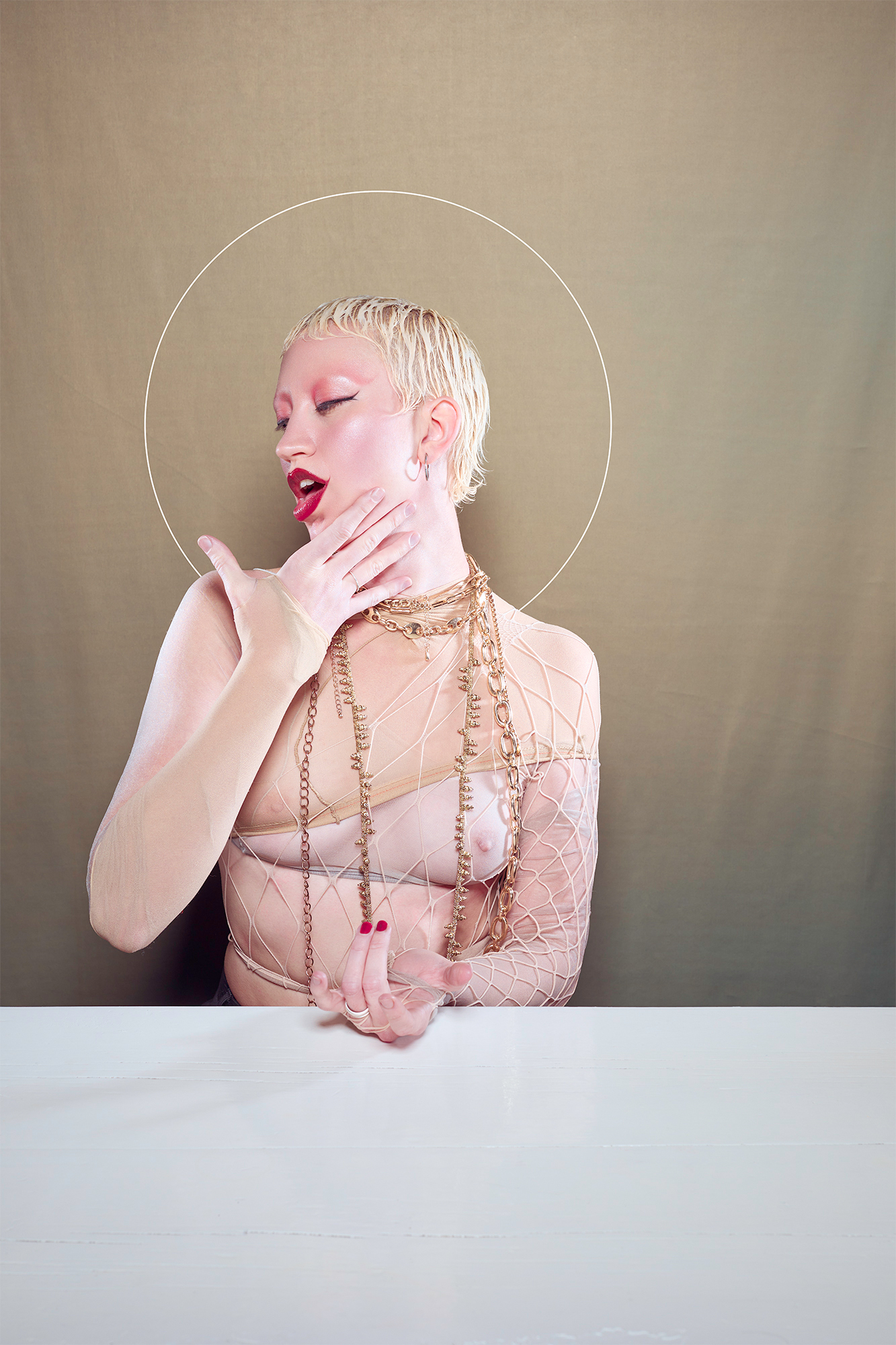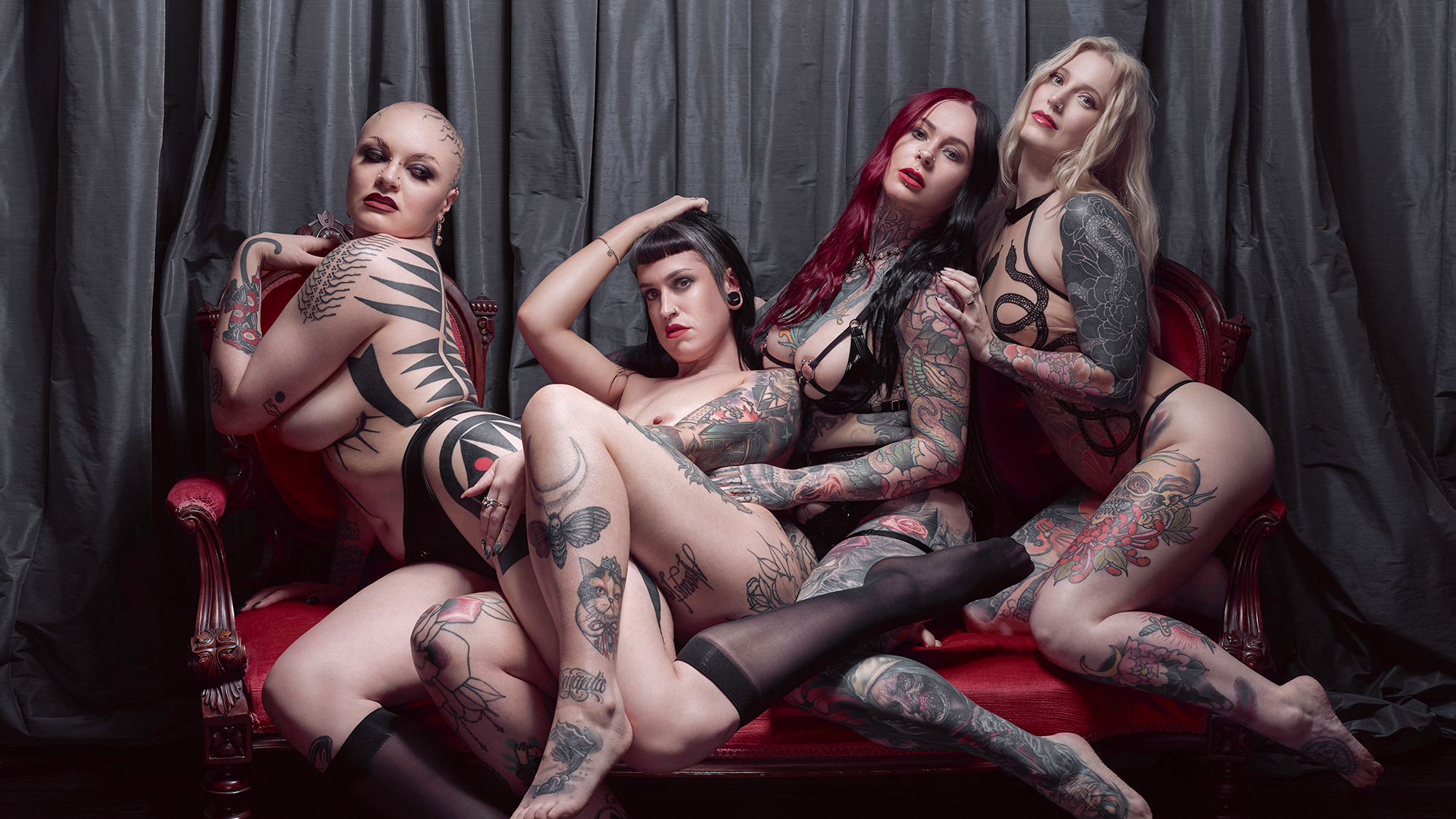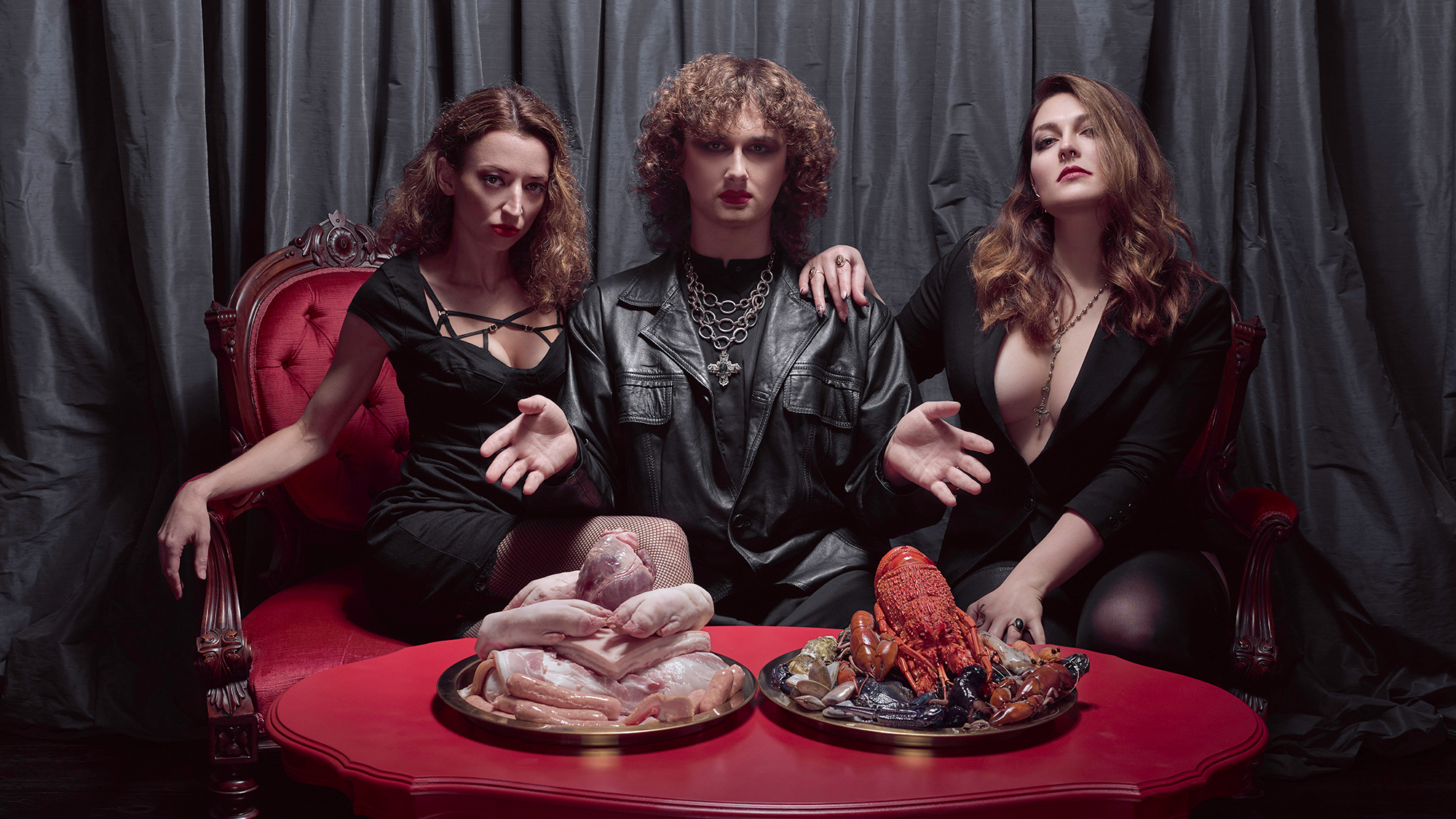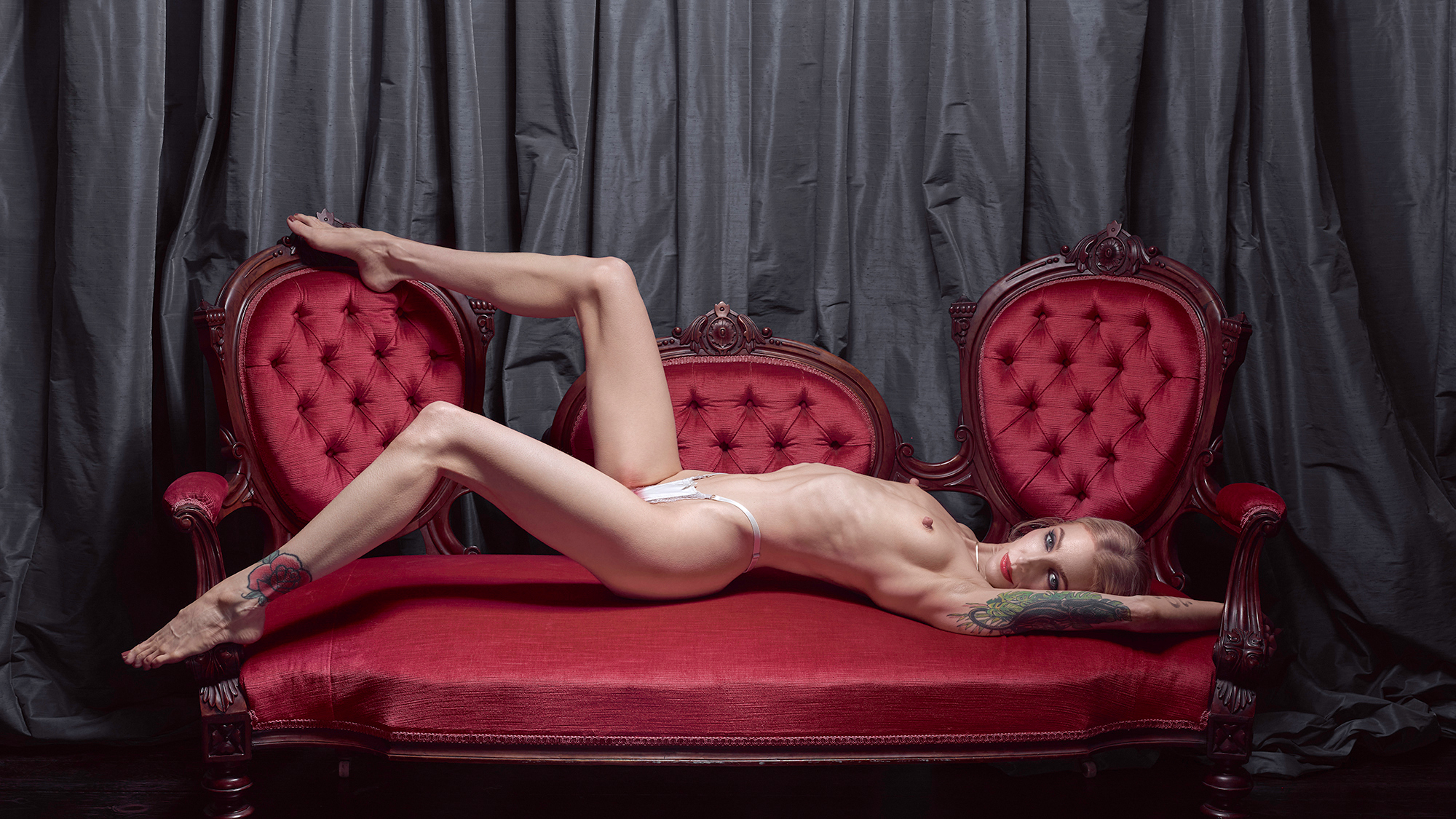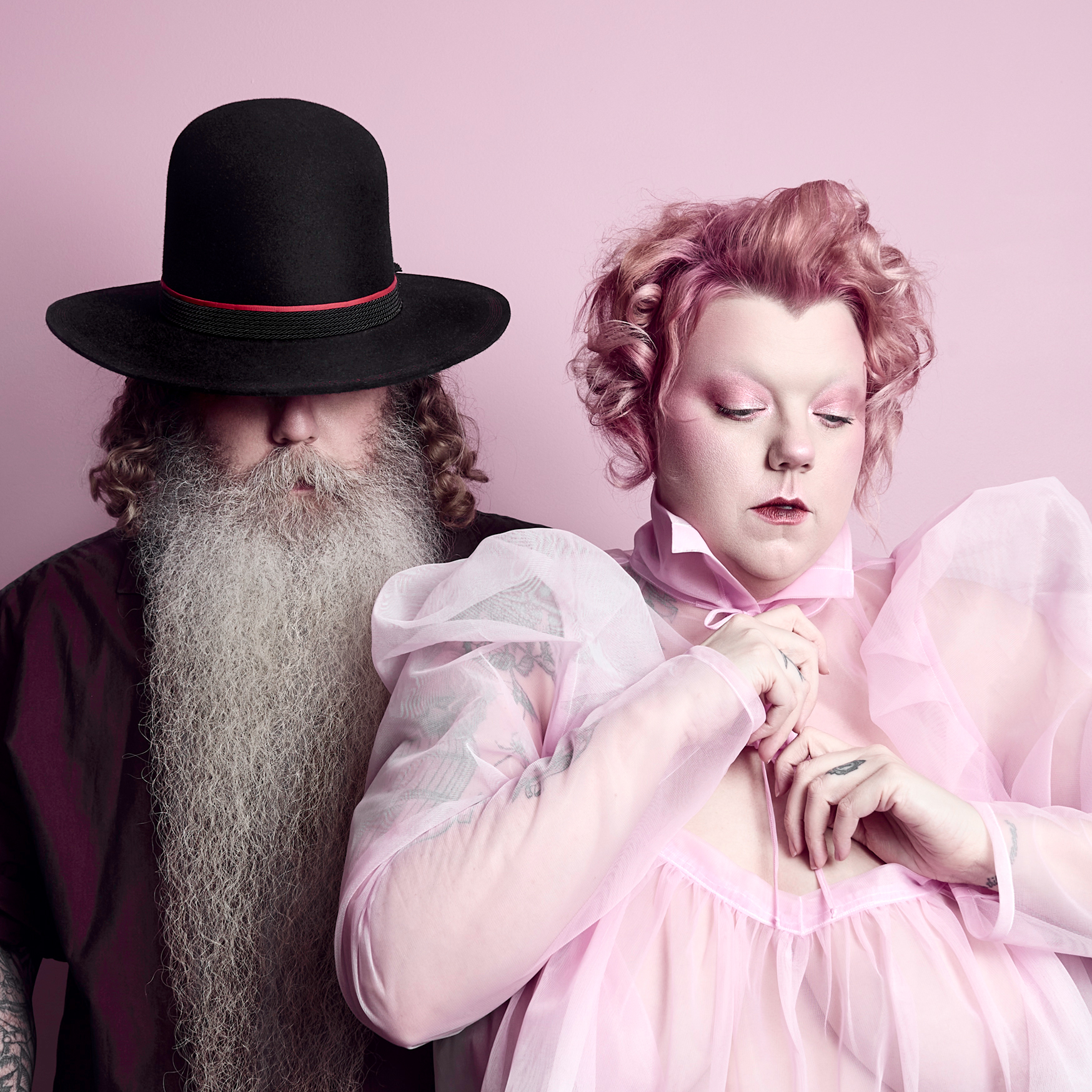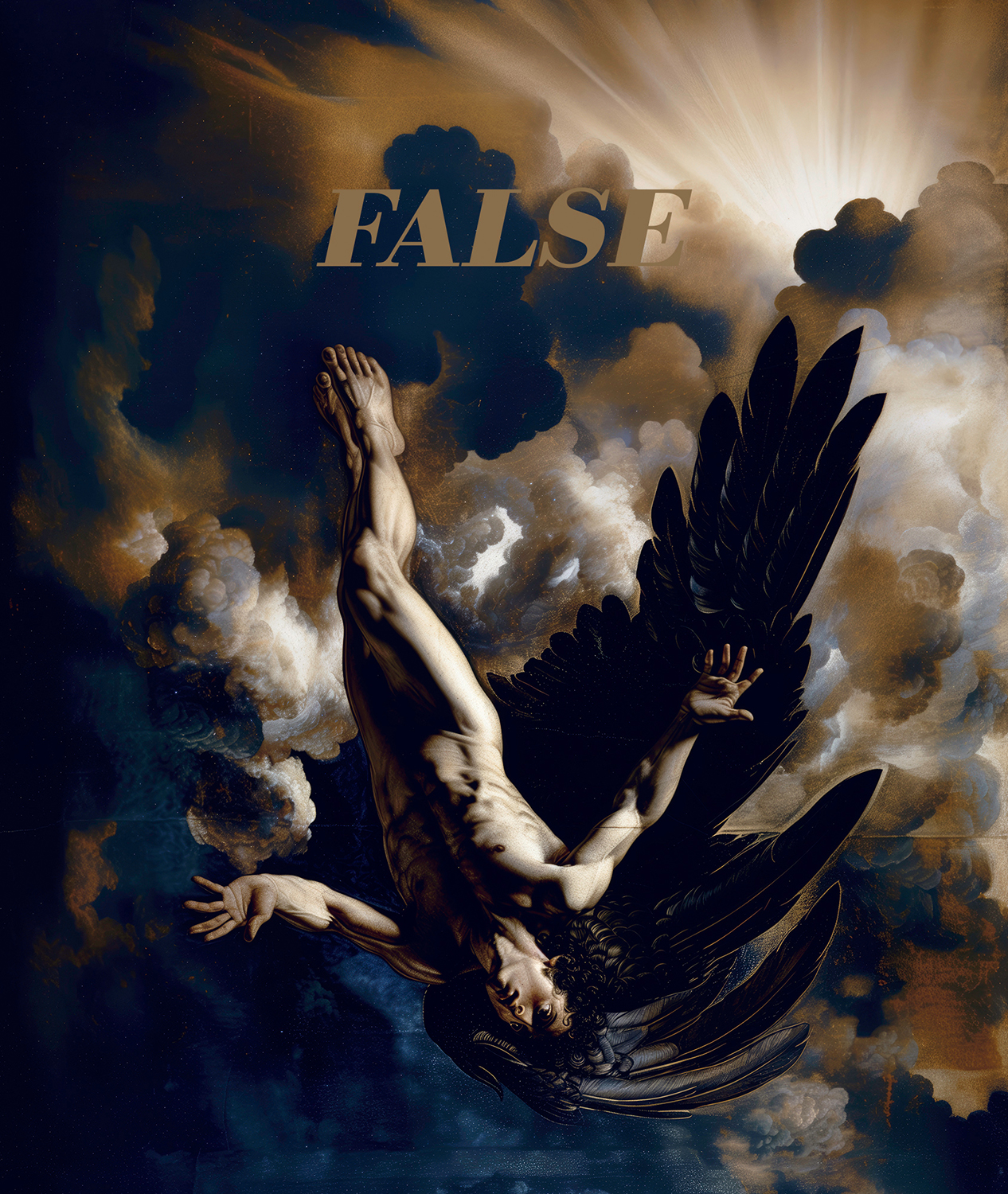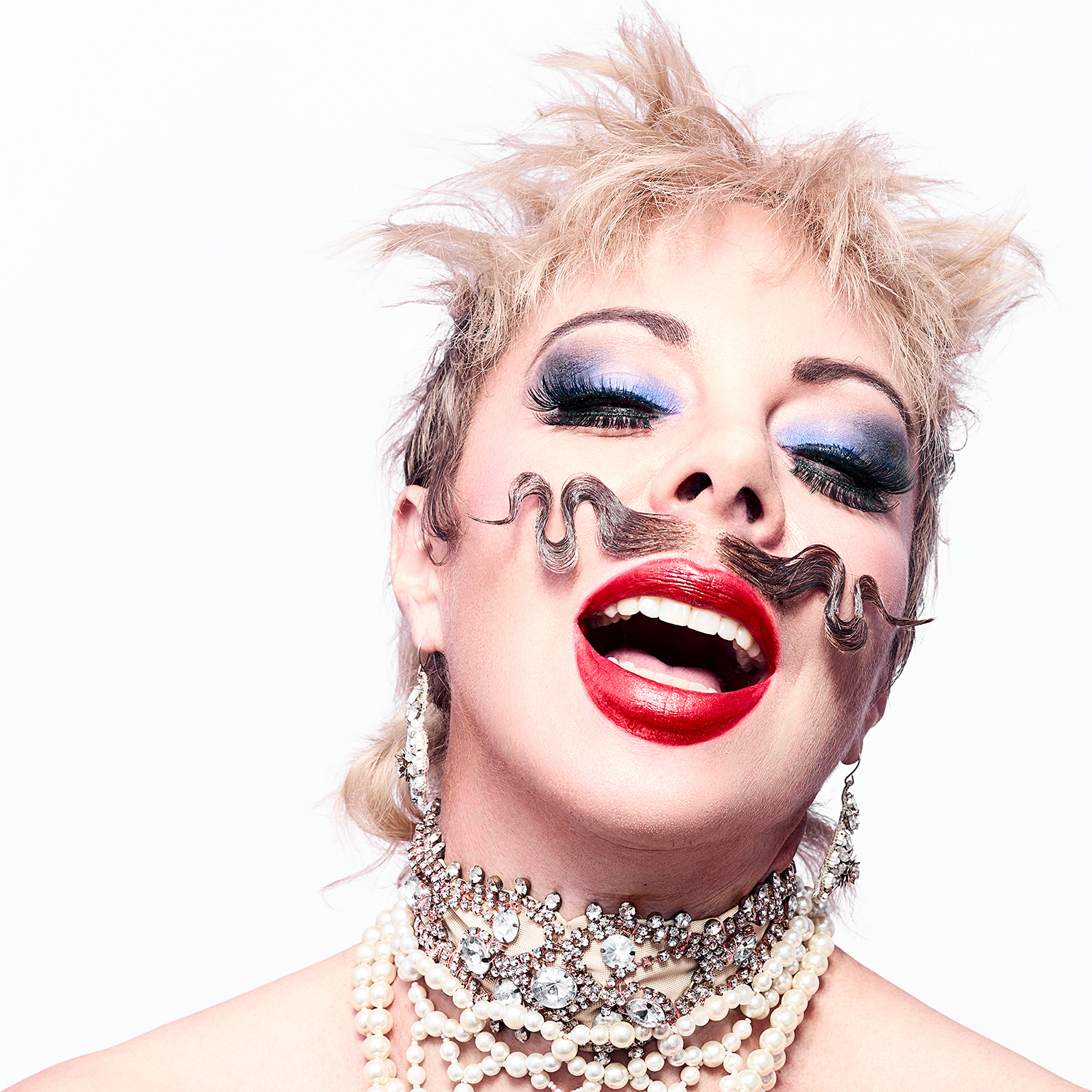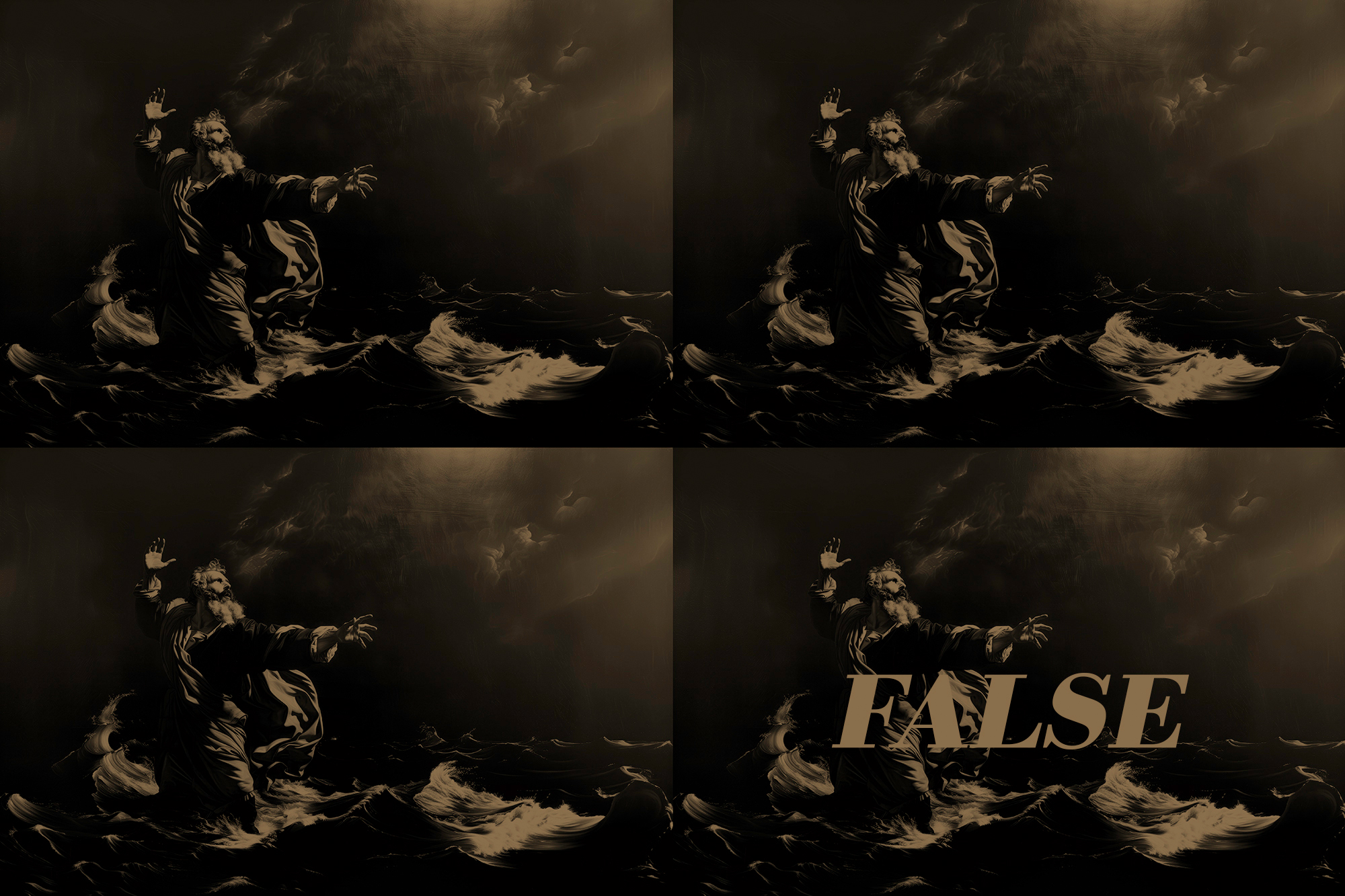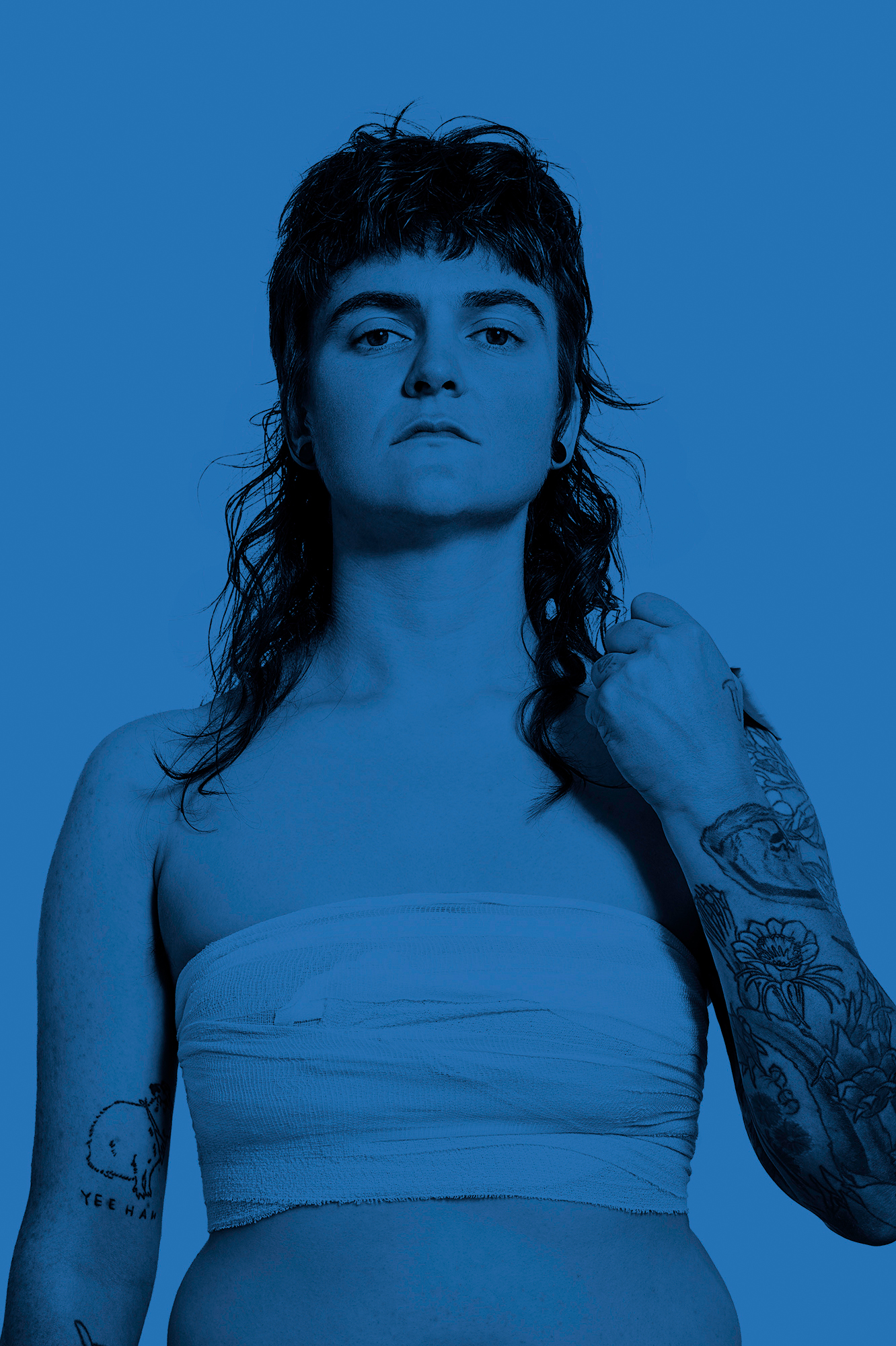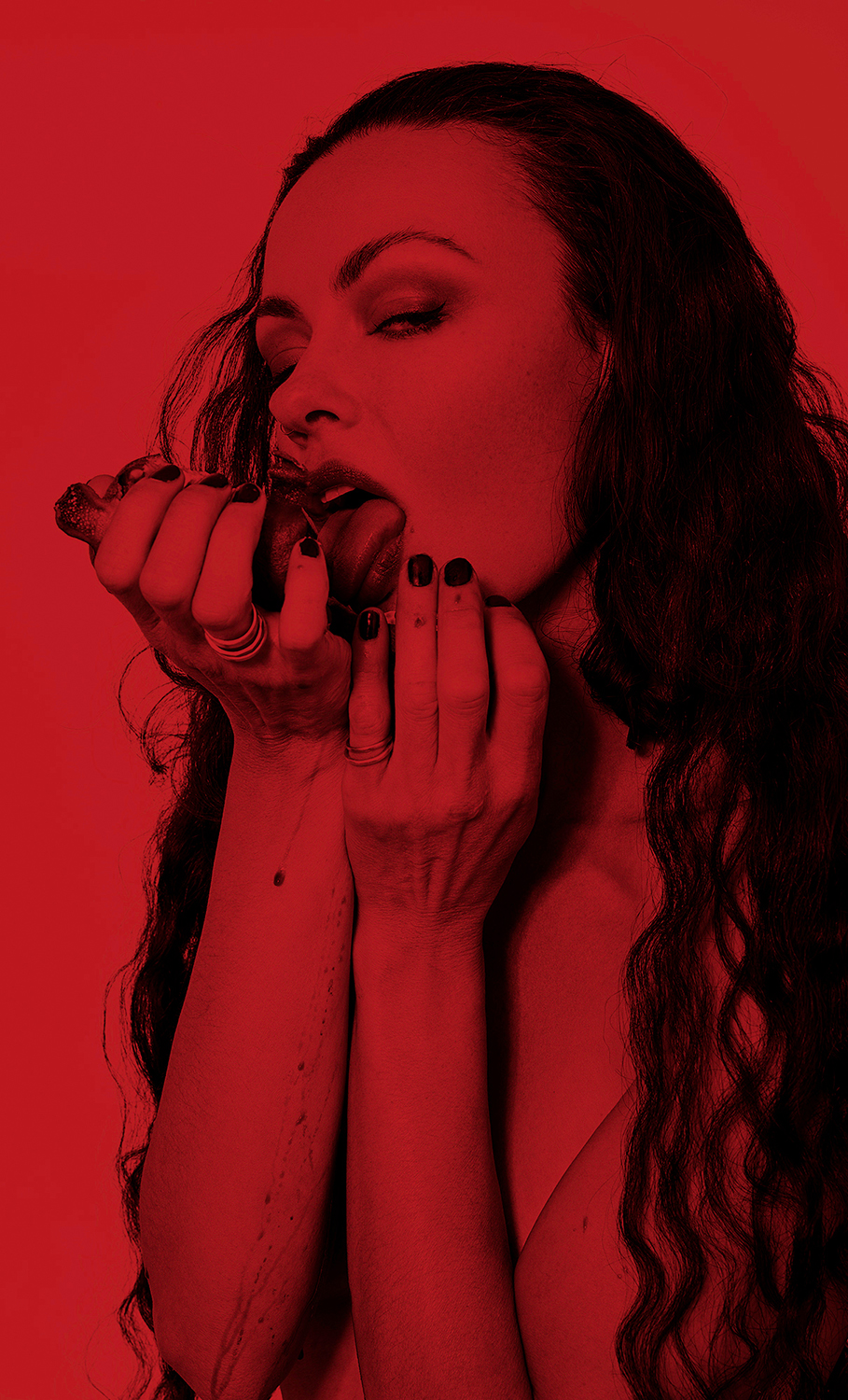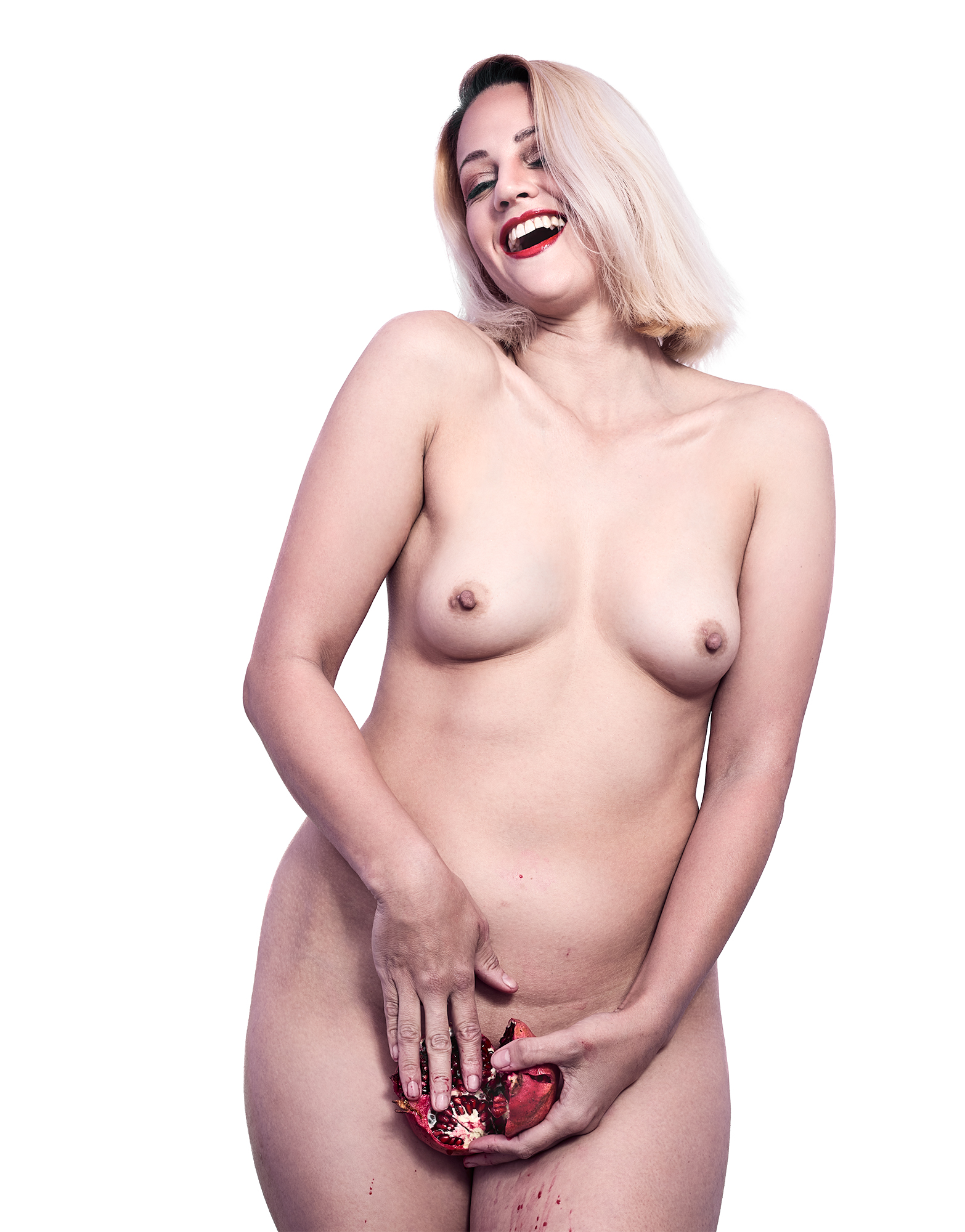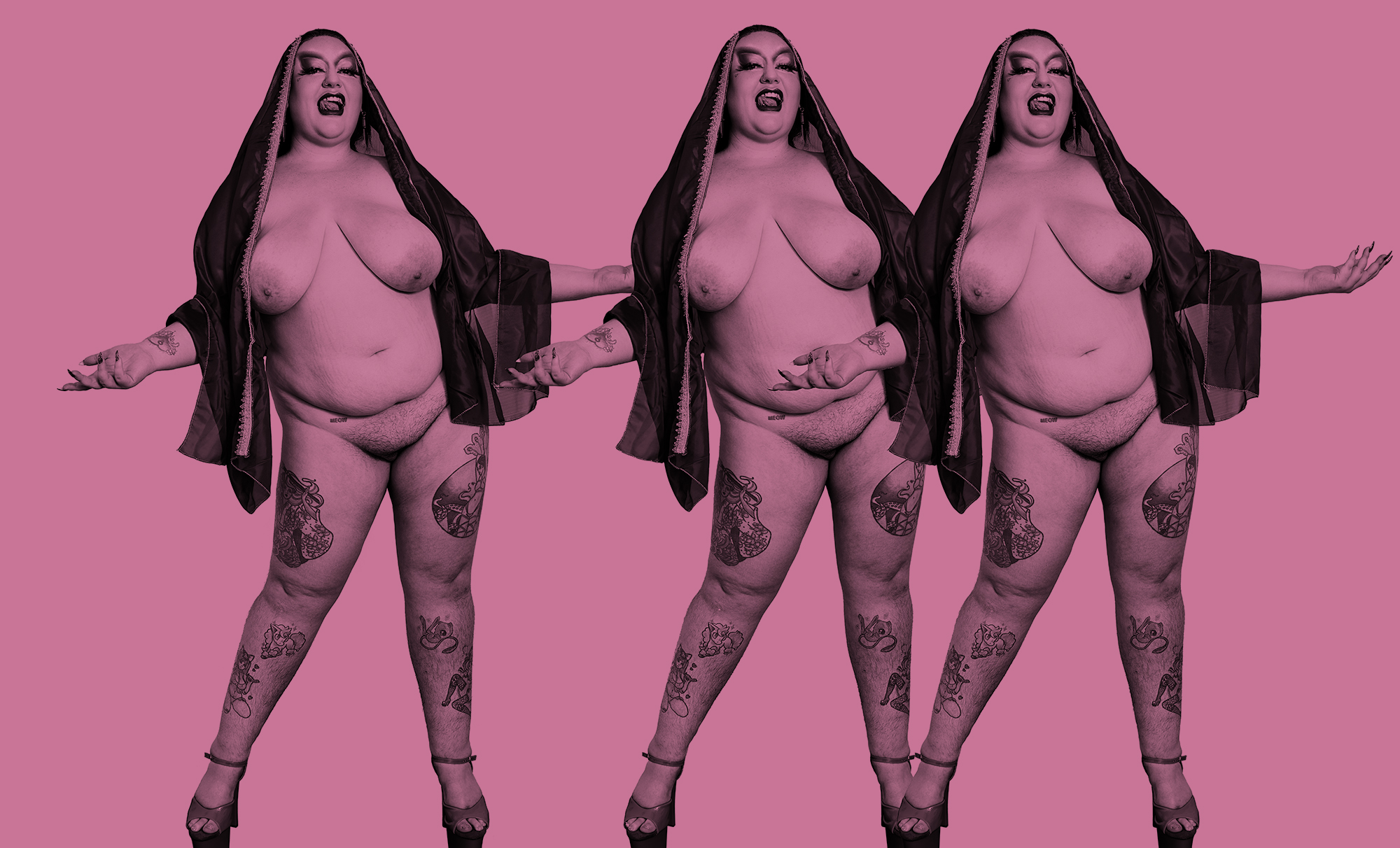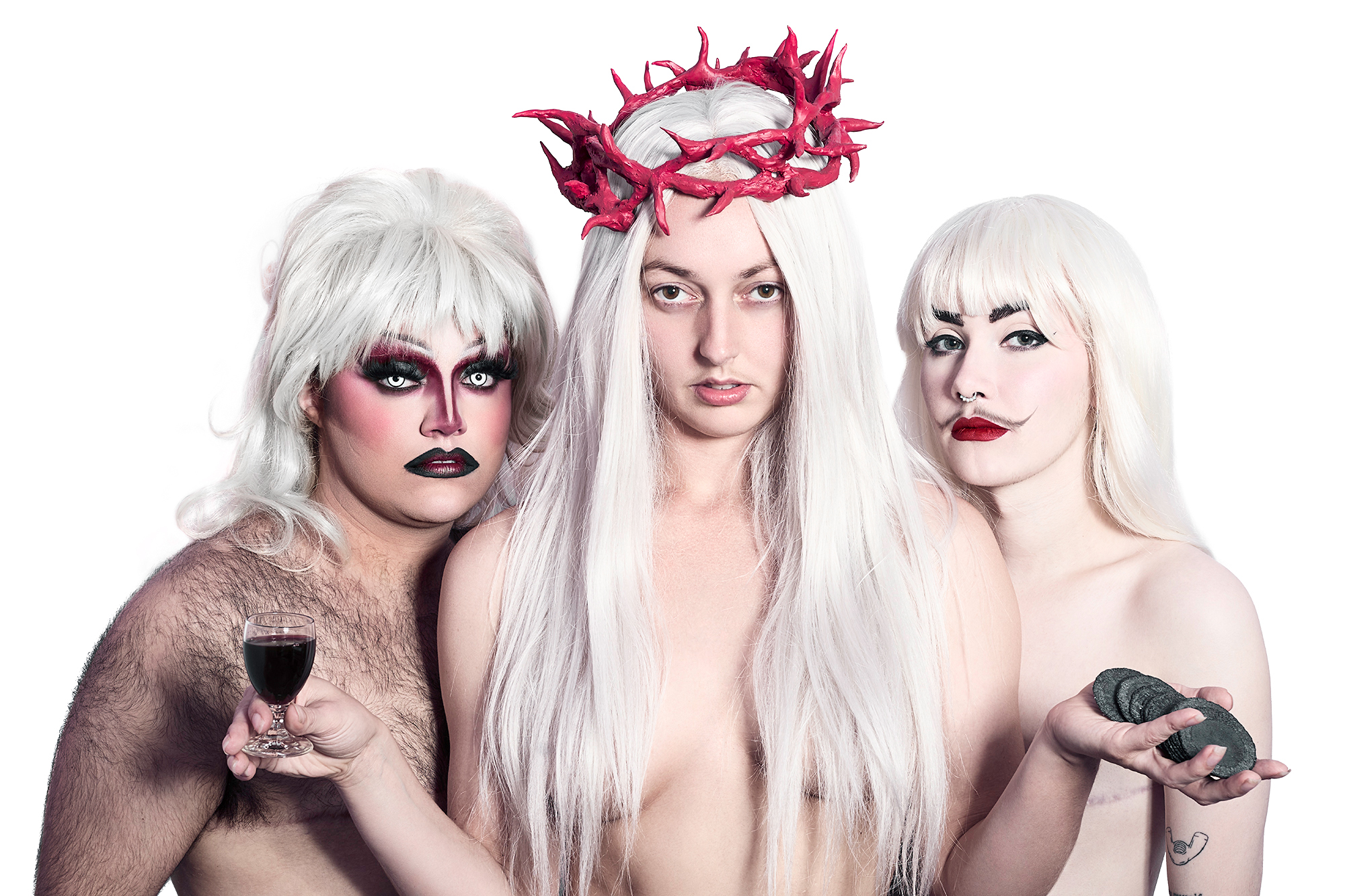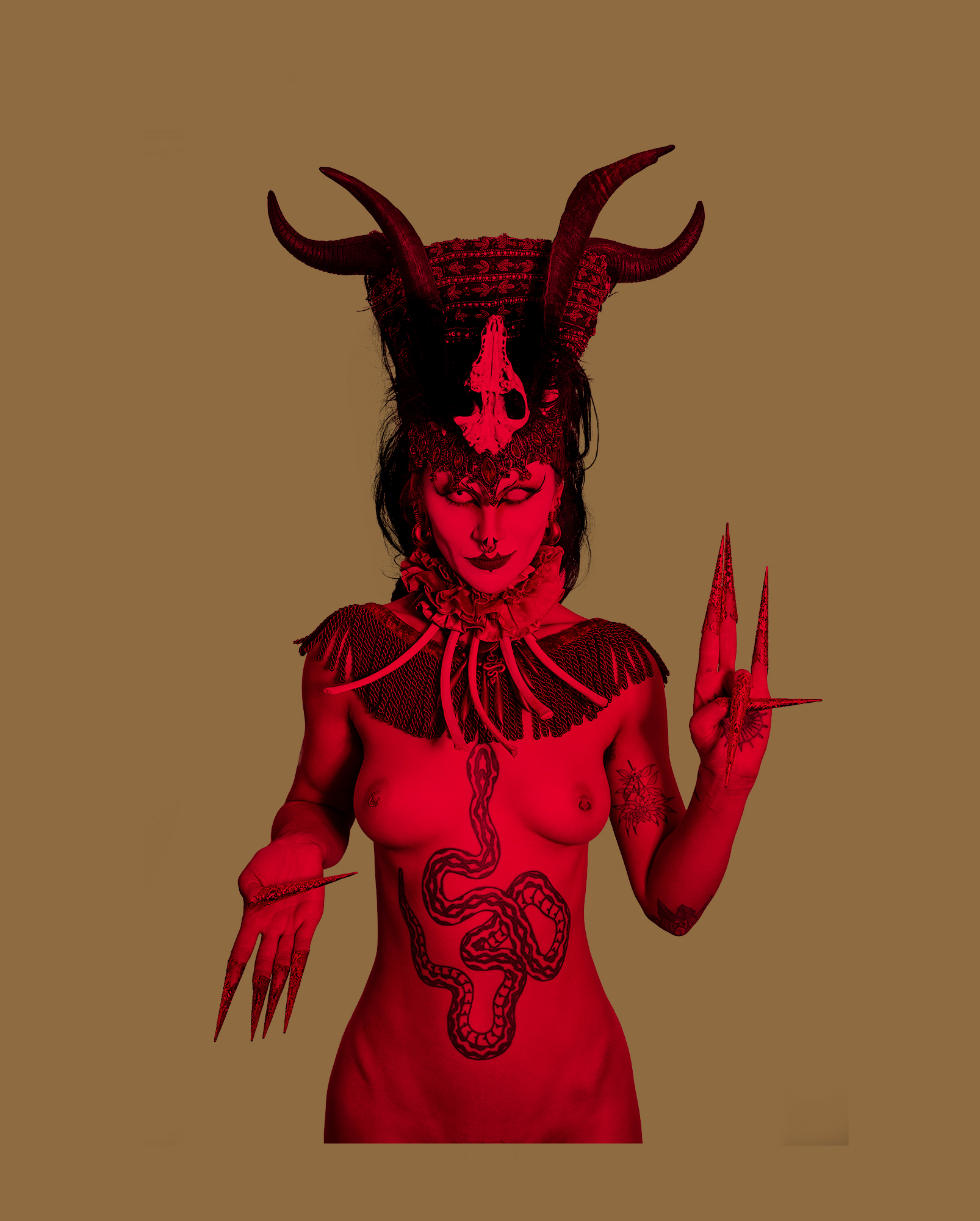- b.leideritz.com
- >
- b.challenged
- >
- Divergent archetypes for old ideas
divergent archetypes for old ideas
Divergent archetypes for old ideas is a collection of photographic and promptographic portraits, displayed as individual prints, that when seen in sequence, propose new ways of being, where queer and alternative performances of self stand against notions of shame and judgement. With research as photographer, and subject, and in collaboration with my queer and ‘othered’ community they actively queer and playfully weaponise: creative space for oppositional action; communal play; individual agency; self-expression; gender performativity; and the erotic. In deconstructing, rearranging, recontextualising and appropriating binary archetypes and narratives, this collection enables the empowerment of individuals and communities alike, and in doing so, inspires those who have felt shame, to make a stand, for themselves, and those they love.
A post-structuralist homage to ‘other’
As an ‘other’, Do we forgive those who trespass against us sets out to question and challenge the normative society in which we have been engulfed by.
The nature of ‘self’ is communicated through performativity and difference, which enables those wishing to retain power of conservative structuralist ideologies, to categorise us in the same way that they mis-contextualise scripture to re-enforce their self-serving needs. We become ‘representations of wrong in the eyes of (their) god’, condemned to their mythological hell, because their narrative requires us to be ‘evil’ in their binary make believe, of which they see themselves as ‘good’.
Giving space for gender performance and representation to our community of ‘other’ allowed for a communal deconstruction and reinterpretation of the symbolism, myth and narrative of the church’s ideologies.
By post-structuralist deconstruction, and by contrasting the religious and mythological representations of Judeo/Christian constructs and its foundational imagery, I present within this homage, the alternative reality and strength of difference that the ideologies of the church continue to demonise to this day. In pushing back against those that have judged us we express the strength of what, and who, we are within the darkness of the binary right and wrong, and in spite of what we have been told is the normal way to perform for the comfort of society.
In the creation of this aspect of Divergent archetypes for old ideas, I see the potential for a wider audience of the invisible ‘other’, and normative personal alike, to appreciate that a conservative structuralist reality isn’t the only ‘truth’, but simply a singular dated and restrictive viewpoint in an ongoing and ever-changing reality of a post-structuralist society where truth is relative, and personal.
A photographic performative queering of judeo/christian archetypes
As a self-identified neurovariant freak I had the misfortune of being raised in a Judeo/Christian environment. I occupied myself by observing how the church functioned in terms of power dynamics, control, judgement, hypocrisy, and guilt in relation to their treatment of those who didn’t fit within their pre-defined notion of ‘good’ or ‘godly’.
I soon realised that being ‘other’ was an invitation for the good flock, to seek me out so that I could be saved. I decided the best way to combat this was to ‘perform’ rather than ‘conform’. I did this by escalating my difference by attending services in different styles of garments. Unfortunately, many others who went through a similar upbringing were forced to conform from fear, peer pressure, or being brainwashed into believing that the only way they could be whole, worthy, and loved was to practice religious teachings they were witness to without question.
By queering the iconography of the church, I have challenged the archetypes that they rely on as examples of ‘the ideal’, the ‘normal’ and in doing so, highlight just how dated and irrelevant they are to society today.
From a theoretical standpoint, I have explored queer theory through Nikki Sullivan, Michael Warner and Alok Vaid-Menon as a method of critique, and gender performativity through Judith Buttler as a method of expression.
This queering is my way of contributing another aesthetic voice to the ongoing deconstruction of religious iconography, power, and judgement, to present to those viewing these photographs, a new reality where difference and ‘otherness’ is worthy of veneration.
Going Gaga on dogmatic scripture
Leviticus be damned is a large scale photographic series that goes Gaga on the dogmatic scripture of the old testament.
This series directly opposes the teachings of the book of Leviticus, with depictions of queer and ‘other’ kin joyfully and intentionally presenting the opposite of what each verse dictates, with the assistance of concepts and teachings from Gaga Feminism to expand the foundational narrative. “… a new gaga gender politics requires a thorough recalibration of the ways in which we know, recognize, and value each other’s genders, desires, and embodiments.” (Halberstam 2012).
This project has been formed in creative collaboration with my community of ‘other’: the freaks; the queers; the trans, the non-binary; the gays; the neurodiverse; the disabled; the people of colour; and those who choose to exist outside of normative societal systems.
By providing space focused on agency, play, individual self-expression, gender performativity, and freedom in which to create alternate ways of being together, the collaboration allowed for authentic and communal deconstruction of the symbolism, myth, and narrative of the church’s ideologies. This shared space established a site for reclamation for our othered selves.
In deconstructing, reconstructing and recontextualising, myself and my co-collaborators visibly depict who we are, as a way to empower ourselves and our community alike. A presenton of our truth, to inspire and encourage those who have felt scared, closeted, shamed: to provide inspiration to be whom they wish to be for themselves, and those they love.
Propaganda, Promptography & the queering of idolatry
We shall not worship false idols is the fourth, and final, aspect of the Divergent archetypes for old ideas collection. This aspect is split into two parts, the first being queer’d pop art inspired photographic portraits, and the second being AI generated promptography that is present to undermine the false and imaginative nature of religious propaganda art within historic Renaissance and Baroque art periods.
The journey of my FREAK self, and by extension all aspects of Divergent archetypes for old ideas, has been heavily inspired by the hypocrisy, trappings, and narcissistic power plays experienced within the church, and resultant step-familial abuse, that I was forced to endure during my childhood and young adult years. It was an existence where conformity was rewarded and difference targeted for saving by the ‘Lord’.
Methodologically, We shall not worship false idols uses the act of queering, and research as practice, as the foundation to the creative methods of déconstruction, appropriation, photographic portraiture, and creative collaboration.
James Cook, a sociologist from the University of Maine, discussed in a video presentation that “To queer something is not only to question something, it is to rewrite normative modes of being and interact in the social world … the belonging in the work to make things strange … to break apart the meanings of either and or.” while Jacques Derrida designates the french word déconstruction as a double movement, disordering … and also rearranging.
Utilising the act of queering, and déconstruction, on religious art, scripture and archetypes, We shall not worship false idols continues to explore the positive action that can be achieved by the act of queering the harm causing ideologies of those who believe that the world exists only in their archaic binary terms.
This self-identification of FREAK was my first positive reclamation, which I hope We shall not worship false idols is for others, that was inspired by making a gender non-conforming goth stand against the drive-by insults from toxic normativity, and the visibility of FREAK’s within popular culture of the 1990’s.
The photographic subject has included: Pop Jesus as a dancing rebel prophet; Lilith, Eve and Adam exploring original sin; the immaculate pop mother/father Mary opening their arms in invitation; the anointing of self; the offering of flesh for worship through observing communion; the strength of the underestimated; and the freedom of choice to take a path that differs to the norm.
The inclusion of false religious promotographic resolutions from within the AI generative tool Midjourney, inspired by the Baroque fine-art of Caravaggio, acts a point of binary contrast to the hopeful non-binary queer idolatry this aspect celebrates.
Scriptural subjects for the promptographic resolutions include: the creation of man; moses parting the red sea; the annunciation; mother Mary, baby Jesus (and black Phillip); The crucifixion of Jesus witnessed by mother Mary and Mary Magdalene; and the fall of Lucifer.
We shall not workship false idols continues to provide creative space that is focused on agency, play, individual self-expression, gender performativity, community freedom, and the erotic, in which we collectively create queer’d ways of being, together. Collaboration between myself as photographer, my community of other as co-conspiritors, and the viewer, allows for continued exploration of the toxic symbolism, myth, and narrative of judeo/christian religious ideologies, and a shared space that exists as a site for hopeful reclamation for our othered selves.
From the start of this creative journey, I have aimed to create portraits that are aspiring in nature, to present positive alternatives that speak of future potentialities for those who, like myself, have or continue to be trapped by shame, guilt, the church, family, community, or ‘normal’ societal structures that do not allow for expansion into their authentic self.
Each aspect of Divergent archetypes for old ideas explored different thematic, and aesthetic facets.
Do we forgive those who trespass against us explored alternative goth, punk and fetish subcultures, influenced by portraiture from master photographers such as Richard Avedon and Helmut Newton, with lighting inspired by the Baroque paintings of Caravaggio, through the theoretical lenses of deconstruction an oppositional action. This aspect began the narrative journey with a more dystopian aesthetic, blending Judeo/Christian, and pagan, archetypes with oppositional elements such as a pregnant Eve, and thematic considerations like the presentation of the seers, the seen, and most importantly for this aspect, the unseen. As previously mentioned, this unseen element, in memory of the Martyr Paradoxx, reminds the viewer that there is a darkness within the humanity of otherness, a battle with darkness that is constantly being fought, and not always won.
Of gods, virgins, saviours, whores & the fallen explored gender performativity and representation of multiple Christian archetypes of God, Virgin, Saviour and Whore, with a single representation of the Devil as a point of individual contrast. This aspect utilised editorial visual cues and post-production to create a linear, repeated and consistent collection of photographic portraits, inspired most by the works of studio works Tim Walker where he utilises a bottom-of-frame white blocking to ground the portraits in space. Unlike the previous aspect, this collection of portraits leans slightly away from the dystopic and towards the utopic with the addition of colour and suggestions of the erotic.
Leviticus be damned explored community and connection, while utilising oppositional action and communal play in the most obvious sense through Divergent archetypes for old ideas. This aspect directly opposed the teachings of the book of Leviticus, with depictions of queer and ‘other’ kin joyfully and intentionally presenting the opposite of what each verse dictates, with the assistance of concepts and teachings from Gaga Feminism to expand the foundational narrative. “… a new gaga gender politics requires a thorough recalibration of the ways in which we know, recognize, and value each other’s genders, desires, and embodiments.” (Halberstam 2012). This aspect, continued to explore suggestions of the erotic, while remaining focused on presentations of choice, of individuality within community, and of standing against dated binary notions of scriptural right and wrong.
We shall not worship false idols, the final aspect of Divergent archetypes for old ideas breaks out of the oppressive restrictions of linear presentation, limitations intentionally engaged to create discomfort in the viewer during the first three aspect suspensions. This freedom from the linear, into an open gallery hang, reflects the role of the act of queering within this aspect, with photographic portraits inspired by the pop-art of Andy Warhol, and photographic influences from the works of Chinese photographer Ren Hang, a photographer who is known for capturing nude and erotic photographs of his friends and community within the Chinese environment of heavy censorship. This aspect explores the contrast between religious propoganda art of renaissance and baroque fine-art periods, by way of false promotographic resolutions, that stand as representations of both the falsity of religious idology and the non-photographic reality of promotographic imagery, and actively queer’d representations of my community of other, in positions of freedom, strength, and hope.
Although the portraits and resolutions of We shall not worship false idols reference both Judeo/christian archtypes and scripture, they are done so only to ground the outcomes in the thematics of Divergent archetypes for old ideas, with the key focus being that of aspiration and potentialities for our future othered selves.
These different aspects and performances, by my community of other, evolved throughout the creative praxis, with Do we forgive those who trespass against us being darker and raw in intent, moving through the aspects to resolve at the utopic performances within We do not worship false idols, replicating a lot of the journeys we had collectively been on within our respective lifetimes.
To quote Eve Kosofky Sedwick “… one of the things that ‘queer’ can refer to: the open mesh of possibilities, gaps, overlaps, dissonances and resonances, lapses and excesses of meaning when the constituent elements of anyone’s gender, of anyone’s sexuality aren’t made (or can’t be made) to signify monolithically. (Sedgwick 1993)

